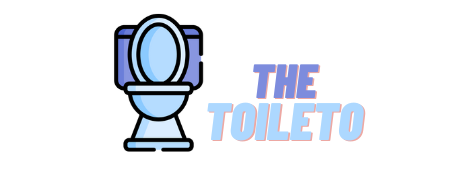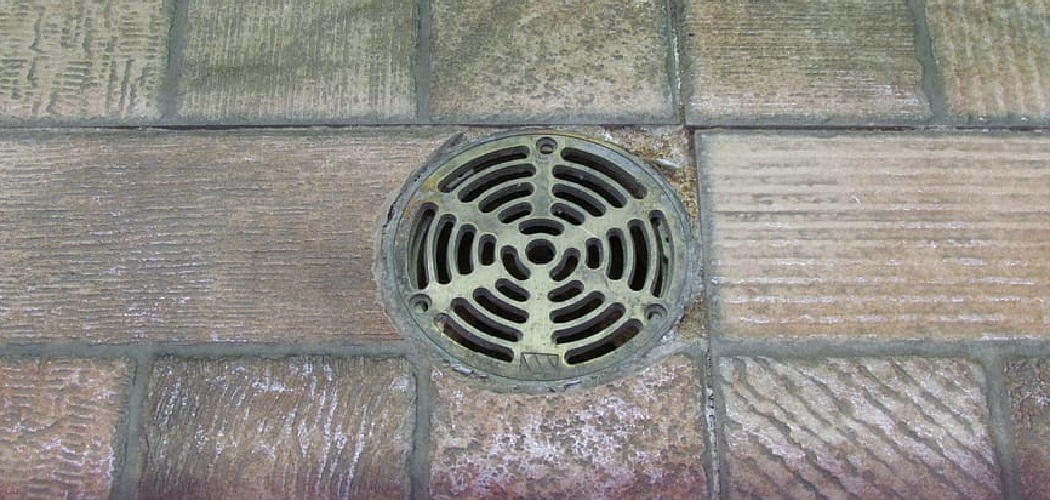Are you experiencing a slow-draining bathroom floor drain? This is a common problem that a variety of factors such as hair, soap scum, and mineral buildup can cause.
Clogged bathroom floor drains can be a common and frustrating household issue, often leading to standing water, unpleasant odors, and even potential water damage. Over time, hair, soap scum, dirt, and debris can accumulate in the pipes, causing blockages that restrict proper drainage. Fortunately, how to unclog bathroom floor drain is a straightforward task that can be tackled with a few simple tools and techniques.
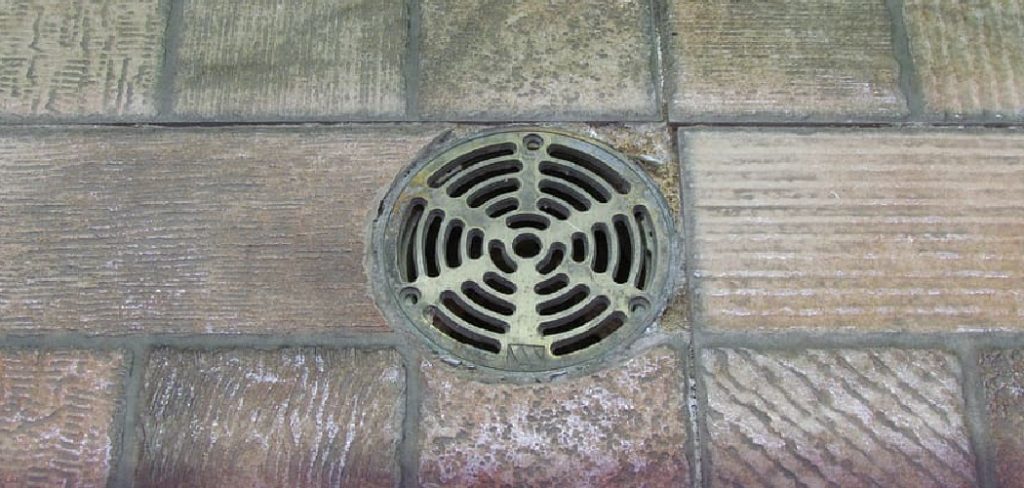
Whether you’re dealing with a minor clog or preparing to handle a more stubborn blockage, understanding the steps involved can save you time, money, and unnecessary stress. Let’s dive into the process of unclogging a bathroom floor drain.
What Are the Causes of Clogs in Bathroom Floor Drains?
There are several common causes of clogs in bathroom floor drains, including:
- Hair: This is one of the most common culprits for clogged drains, as hair can easily get caught and tangled in the pipes.
- Soap Scum: The residue left behind from soap and body wash can build up over time and contribute to clogs.
- Dirt and Debris: Small particles of dirt, dust, and other debris can make their way into the drain and accumulate over time.
- Foreign Objects: Items like cotton swabs, dental floss, and small toys can accidentally fall into the drain and become lodged. Keeping these items away from the drain is essential to prevent clogs.
- Tree Roots: This may seem like an unlikely cause, but tree roots can grow into underground pipes and cause major blockages. This is more common in older homes with outdated plumbing systems.
What Will You Need?
- Plunger: A plunger is a simple and effective tool for clearing minor sink, toilet, and tub clogs.
- Drain Snake: Also known as an auger, this tool can break up stubborn clogs deep into the drain.
- Baking Soda and Vinegar: This natural combination can clear minor clogs and keep your drains smelling fresh.
- Commercial Drain Cleaner: For tougher clogs, you may need to use a chemical drain cleaner. Be sure to follow the instructions carefully and take safety precautions.
- Wet/Dry Vacuum: This powerful tool can be used to unclog sinks or toilets by creating suction.
Remember to always have gloves on hand when working with any of these tools, as well as a plunger for additional clog-clearing power.
8 Easy Steps on How to Unclog Bathroom Floor Drain
Step 1. Remove the Drain Cover:
Start by carefully removing the drain cover to access the clogged area. Use a screwdriver or a similar tool if the cover is fastened with screws. If the cover is stuck due to debris, gently pry it open using a flathead screwdriver, taking care not to damage the surrounding area. Once removed, inspect the cover for any visible grime or buildup, and clean it thoroughly with warm, soapy water before setting it aside. This step ensures that no additional debris falls back into the drain when you’re working on clearing the clog.
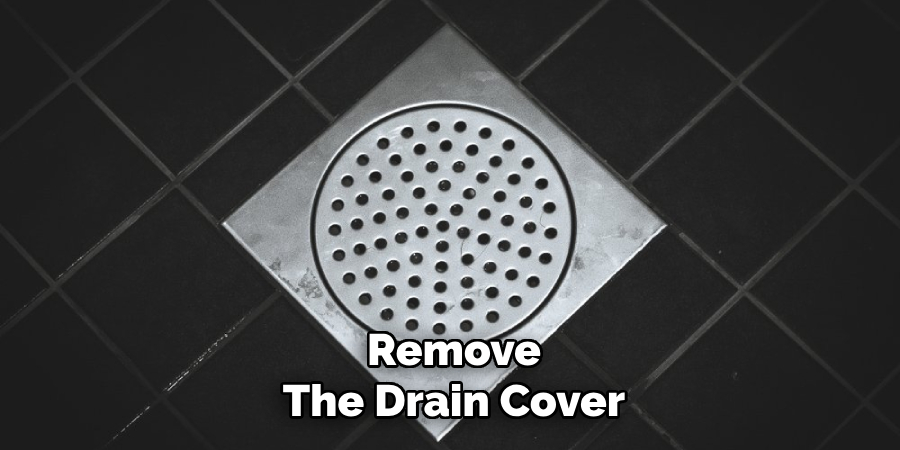
Step 2: Remove Visible Debris
Using a pair of gloves, reach into the drain opening and carefully remove any visible debris or buildup. Common obstructions include hair, soap scum, and accumulated dirt. Use your fingers or a small tool, such as a wire hook or tweezers, to pull out as much as possible. Place the removed debris into a trash bag to avoid clogging the drain further. This step is crucial for manually clearing the blockage before proceeding to deeper cleaning methods.
Step 3: Use a Plunger
Once you have removed as much debris as possible, place a plunger over the drain opening. Ensure enough water in the sink or tub to cover the plunger’s rim, which helps create a strong seal. Push the plunger up and down firmly and repeatedly for about 30 seconds. This action can loosen any remaining blockage and allow water to flow freely. After plunging, check if the drain is clearing properly. If the clog persists, proceed to the next step for a more intensive approach.
Step 4: Use a Drain Snake
If the plunger does not resolve the issue, the next step is to use a drain snake. Insert the drain snake into the drain opening and slowly push it down while turning the handle. Continue feeding the snake into the pipe until you feel resistance, indicating the clog’s location.
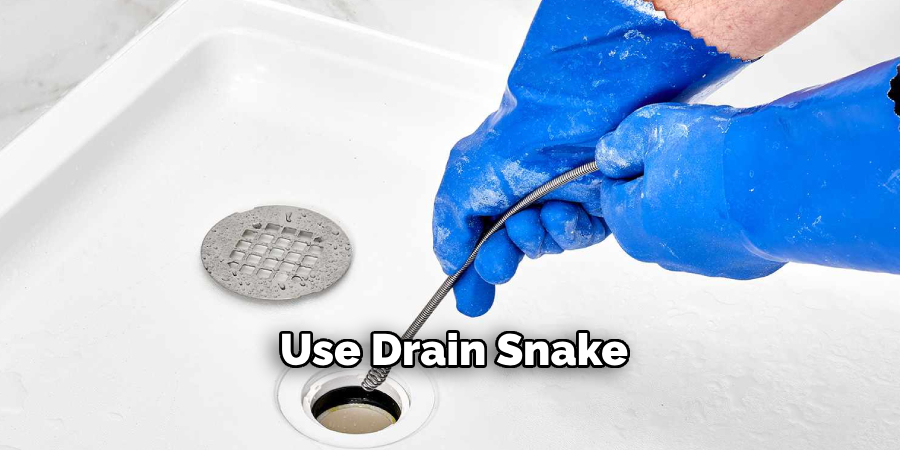
Once the clog is reached, twist and maneuver the snake to break up or remove the debris. Carefully retract the snake and dispose of any material it brings back. Run water to check if the drain is now clear. If the blockage remains, additional professional assistance may be required.
Step 5: Clean and Sanitize the Area
Once the drain is clear, clean and sanitize the area around the drain to ensure hygiene. Use a disinfectant cleaner to wipe down the sink, drain opening, and any tools used. This helps to eliminate bacteria and odors that may have accumulated during the clog removal. Rinse the area thoroughly with water and dry it with a clean cloth or paper towel. Regular maintenance and cleaning can prevent future blockages.
Step 7: Dispose of Waste Properly
After cleaning, ensure that any waste material, debris, or items removed from the drain are disposed of properly. Place them in a sealed trash bag to prevent odors or contamination. Avoid throwing debris back into the sink or drain to prevent further clogging. Taking this step ensures a clean and hygienic environment while maintaining the functionality of your drainage system.
Step 8: Regular Maintenance
To prevent future clogs, implement a routine maintenance schedule for your drains. Periodically pour a mixture of hot water and baking soda or a specialized drain cleaner down the drain to break down any buildup. A drain strainer can also help catch food particles, hair, and other debris before they enter the pipes. Regular maintenance keeps your drainage system in optimal condition and helps avoid costly repairs over time.
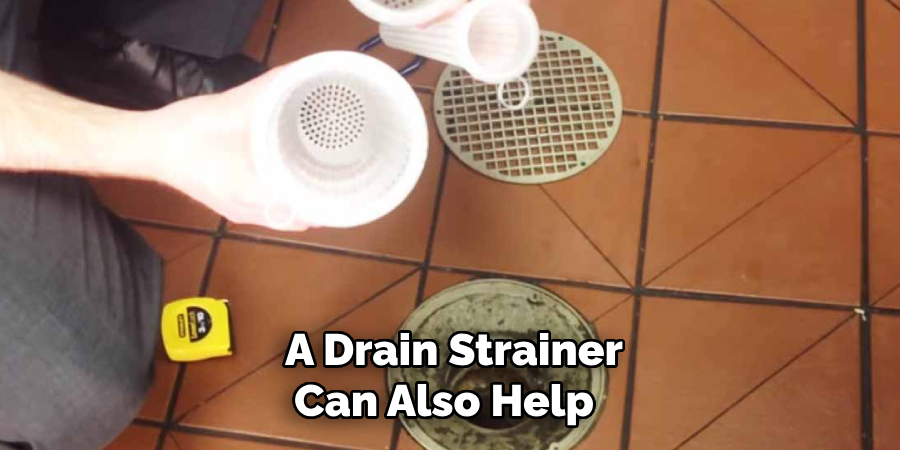
By following the steps outlined in this guide, you can effectively and efficiently unclog your drains without calling a plumber.
5 Things You Should Avoid
- Using Harsh Chemical Cleaners Repeatedly
While chemical drain cleaners may offer quick results, overusing them can corrode your pipes and damage the plumbing system. Always opt for safer alternatives whenever possible.
- Forcing Objects into the Drain
Attempting to push blockages deeper with sticks, rods, or similar objects can worsen the clog and potentially harm your plumbing.
- Ignoring Protective Gear
Handling clogs often involves exposure to dirty water, bacteria, and chemicals. Always use gloves and proper protection to ensure your safety during the process.
- Pouring Boiling Water into Plastic Pipes
Although hot water can help dissolve some clogs, pouring boiling water into PVC or plastic pipes might cause them to weaken or warp over time.
- Procrastinating on Maintenance
Minor blockages can grow into significant issues if left untreated. Avoid delaying repairs when you notice the first signs of a slow drain or minor backup. Regular maintenance can prevent more significant problems down the line.
By avoiding these common mistakes, you can keep your pipes and drains in good condition for longer periods of time.
Do Baking Soda and Vinegar Melt Hair?
No, baking soda and vinegar do not melt hair. They may help clear minor blockages by creating a fizzy reaction, but they will not wholly dissolve hair or any other solid material in your drains. It is essential to use these products in moderation and with caution, as excessive use can damage your pipes.
Instead, using a drain snake or calling a professional plumber is recommended if you have a major clog caused by hair or other solid material. These tools are designed to effectively remove the blockage without causing any damage to your pipes.
What is a Drain Zipper?
A drain zipper is another tool that can be used to clear clogs in your drains. It is a long plastic strip with small hooks or teeth on both sides designed to catch the hair and other debris in your drain and pull it out. This tool is specifically designed for removing hair clogs and can effectively prevent future blockages.
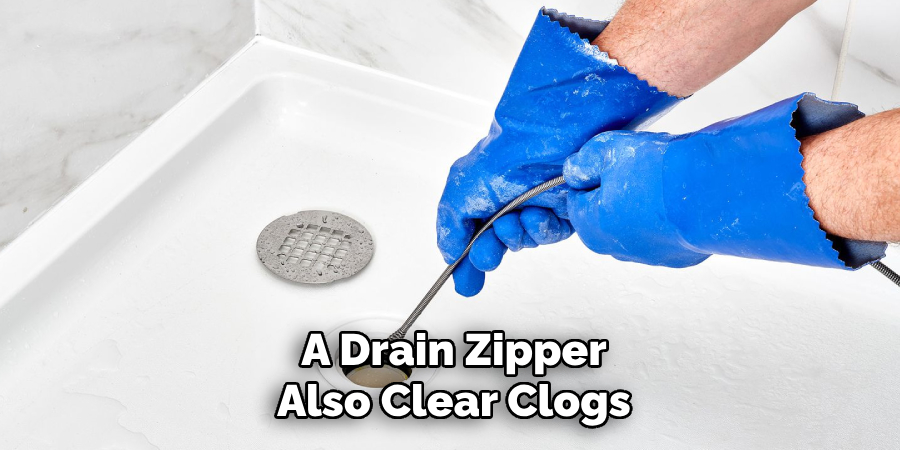
It is important to note that a drain zipper may not work for all types of clogs, such as those caused by grease or food particles. In addition, it is essential to use caution when using a drain zipper and follow the manufacturer’s instructions carefully to avoid damaging your pipes.
Conclusion
How to unclog bathroom floor drain can be a straightforward process if approached systematically.
Start by identifying the cause of the blockage and choose the appropriate method, such as using a plunger, a drain zipper, or a drain snake. For more stubborn clogs, a mixture of baking soda and vinegar or store-bought drain-cleaning solutions may be effective, but always use them cautiously. Regular maintenance, such as cleaning the drain cover and removing debris periodically, can help prevent future clogs.
If all else fails or if the problem persists, consulting a professional plumber is advisable to avoid causing damage to your plumbing system.
